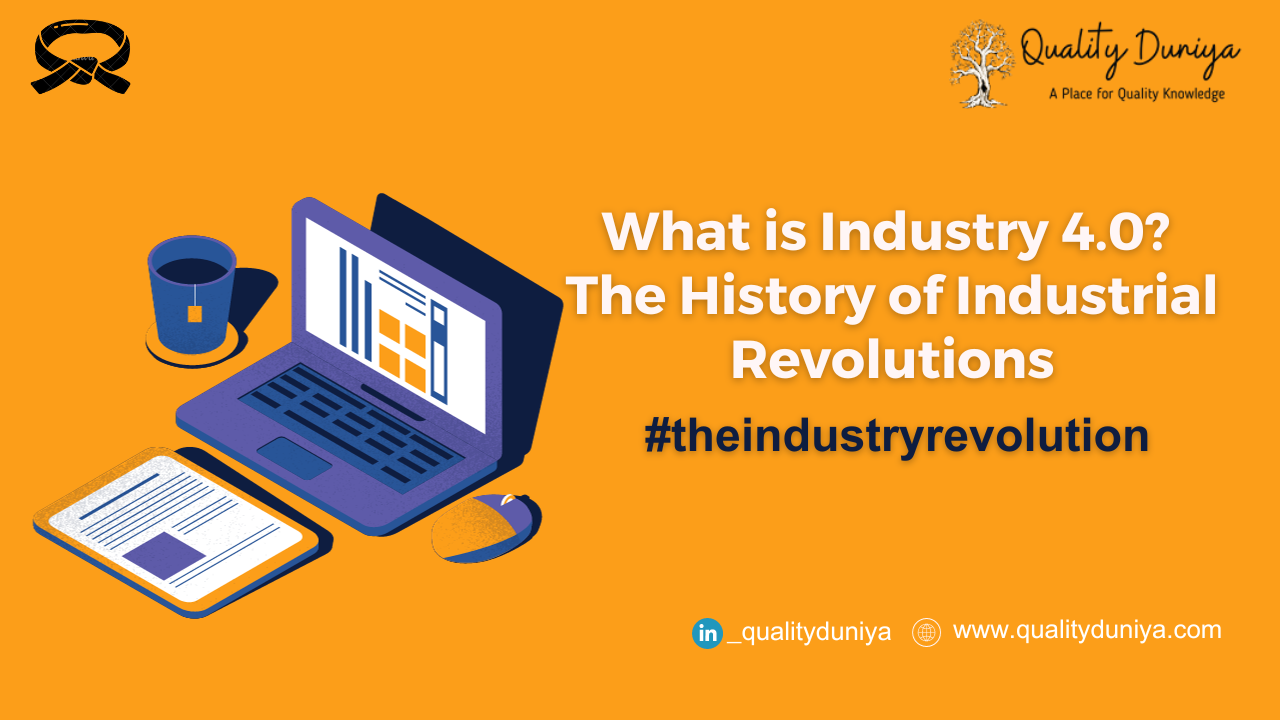In today's rapidly evolving landscape of technology and manufacturing, Industry 4.0 has become a buzzword in recent years. But what exactly is Industry 4.0, and how does it fit into the grand narrative of industrial revolutions?
In this blog, we'll delve into the history of industrial revolutions and shed light on what Industry 4.0 means for the future of manufacturing.
What is Industry 4.0?
Industry 4.0, also known as the Fourth Industrial Revolution, represents a significant shift in the way industries operate and produce goods. It is characterized by the integration of digital technologies, data, and the Internet of Things (IoT) into the traditional manufacturing processes. Industry 4.0 is not merely about automating tasks but creating interconnected and smart systems that can make decisions on their own. Some of the key technologies that drive Industry 4.0 include artificial intelligence, machine learning, big data, and advanced robotics.
The Historical Perspective
Before we explore the latest revolution, let's take a step back and examine the three previous industrial revolutions that shaped the world as we know it:
1. What was the First Industrial Revolution
The First Industrial Revolution began in the late 18th century, with the mechanization of the textile industry and the advent of steam power. This period saw the transition from agrarian economies to industrial economies, with the steam engine and mechanized textile factories playing pivotal roles in this transformation.
2. What was the Second Industrial Revolution
The Second Industrial Revolution, which took place in the late 19th and early 20th centuries, was characterized by the development of electricity and the assembly line. Mass production and electrification of industries revolutionized manufacturing, making goods more affordable and accessible.
3. What was the Third Industrial Revolution
The Third Industrial Revolution, often referred to as the Digital Revolution, occurred in the late 20th century. This period was marked by the widespread adoption of computers, the internet, and automation. These technologies enhanced communication and streamlined processes, significantly impacting various industries.
Industry 4.0: The Fourth Industrial Revolution
With the stage set by the three previous revolutions, Industry 4.0 takes us into a new era of manufacturing. It builds upon the digitalization and automation of the third revolution but takes it to new heights.
Here are some key aspects of Industry 4.0:
1. Connectivity
Industry 4.0 thrives on interconnected systems. Machines and devices communicate with each other in real-time through the Internet of Things (IoT). This connectivity allows for the seamless exchange of information and data analysis.
2. Data and Analytics
Data is the lifeblood of Industry 4.0. It is collected from various sources and analyzed using advanced analytics tools, enabling manufacturers to make informed decisions and optimize processes.
3. Smart Manufacturing
In Industry 4.0, smart factories are equipped with machines that can make autonomous decisions. These smart machines are highly adaptable and can adjust to changing conditions and requirements.
4. Customization and Efficiency
With advanced technologies, manufacturers can produce highly customized products efficiently. This caters to the growing demand for personalized goods.
Key Features of Industry 4.0
1. Cyber-Physical Systems (CPS): The core of Industry 4.0 is the integration of physical machinery with smart digital systems. This fusion enables real-time monitoring, analysis, and control of industrial processes.
2. Internet of Things (IoT): IoT devices collect data from machinery and sensors, allowing for efficient decision-making, predictive maintenance, and improved overall performance.
3. Big Data and Analytics: Massive amounts of data are generated, and advanced analytics are employed to derive valuable insights from this data. This data-driven decision-making optimizes production and quality.
4. Machine Learning and Artificial Intelligence: These technologies are used to develop self-learning systems that can adapt and optimize operations over time.
5. Digital Twin Technology: It creates virtual representations of physical assets, enabling simulations, testing, and predictive maintenance.
6. Cloud Computing: The cloud enables easy storage, accessibility, and sharing of data across the manufacturing chain.
7. Smart Factories: These are highly connected facilities where machines, products, and systems communicate and cooperate with each other.
The Global Impact of Industry 4.0
Industry 4.0 has had a profound impact on a global scale. It has led to more efficient and flexible manufacturing processes, reduced downtime, increased product customization, and cost reductions. This shift has not only transformed the manufacturing sector but also created new job opportunities in the technology and data analysis fields.
Conclusion
In conclusion, Industry 4.0 is the latest chapter in the ongoing saga of industrial revolutions. Building upon the innovations of the past, it brings interconnectedness, data-driven decision-making, and smart manufacturing to the forefront. As we stand on the cusp of this transformative era, it's crucial for industries to adapt and embrace the changes that Industry 4.0 offers. By doing so, we can further enhance productivity, efficiency, and customization, leading to a brighter future for manufacturing.
The integration of technology in the manufacturing sector is an exciting and dynamic process, and Industry 4.0 is a testament to the ever-evolving nature of the industry. Industry 4.0 is not just a trend; it's a revolution that's here to stay. As businesses and industries continue to evolve, the principles of Industry 4.0 will play a pivotal role in shaping our future.
Stay tuned for more in-depth articles on the various aspects of Industry 4.0, its applications, and its implications for businesses and society.




